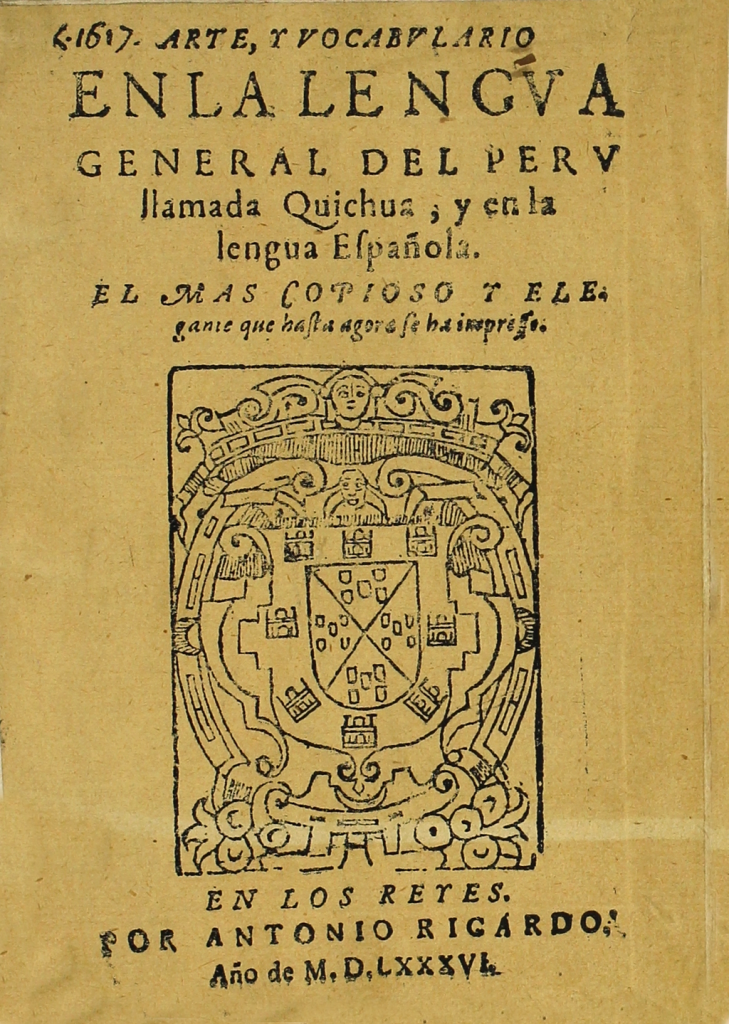
Libraries
Libraries
Arte, y vocabulario en la lengua general del Perú llamada Quichua y en la lengua española: el más copioso y elegante que hasta ahora se ha impreso
The publication of this important book in Lima in 1586 is a direct consequence of the Third Council of Lima. Precisely, one of these important guidelines was to develop a vocabulary or grammar of the Quechua language for the benefit of evangelization campaigns. This is confirmed by Antonio Ricardo, printer of the text, in the proem: “Considerando yo aquesto, y la necesidad que en estos reynos avia para la buena doctrina delos naturales, y declaración del Cathecismo, Confessionario y Sermonario, que por decreto del Sancto Concilio Provincial se hizo en esta Ciudad, he hecho este Vocabulario el mas copioso que ser pudo en la lengua Quichua y Española con animo de hazer otro en la lngua Aymara que falta”.
The book is made up of three parts. The first is a dictionary of Quechua-Spanish terms; the second, a dictionary of phrases and; the third, a grammar. The perspectives with which the student approaches this book can be varied: from historical, linguistic, philological to even philosophical insofar as this is interested in the elements of the book that allow him to argue in favor of a philosophical reading of language.
Likewise, it is clear that in addition to consisting of a dictionary of Quechua terms, it was also an early testimony of so-called missionary linguistics. The main authorship has been attributed to various missionaries and intellectuals, such as Ludovico Bertonio, Francisco del Canto, Domingo de Santo Tomás, Diego González Holguín, Diego de Torres Rubio and even Alfonso Bárcena. Therefore, being a book the result of a conciliar agreement, it is more likely that it is a collaborative text of multiple authorship.
Jean Christian Egoavil
Proyecto Estudios Indianos

